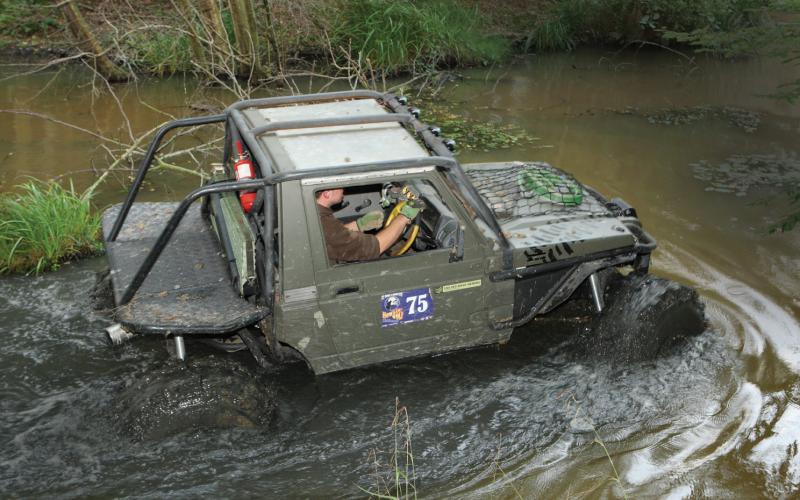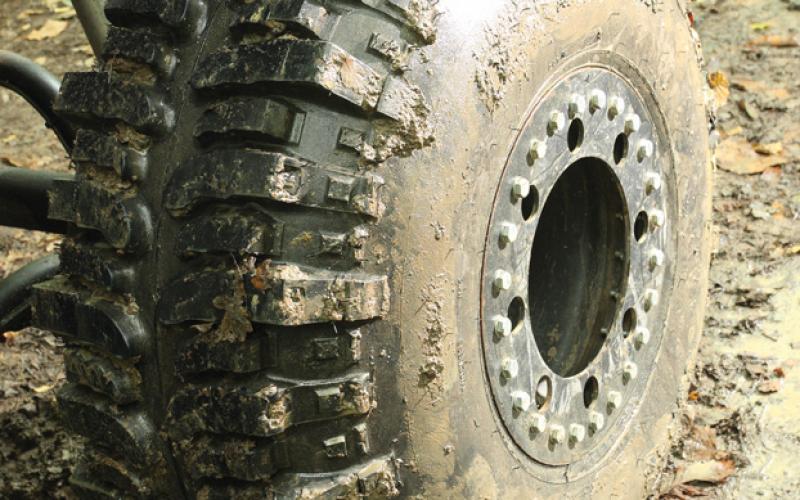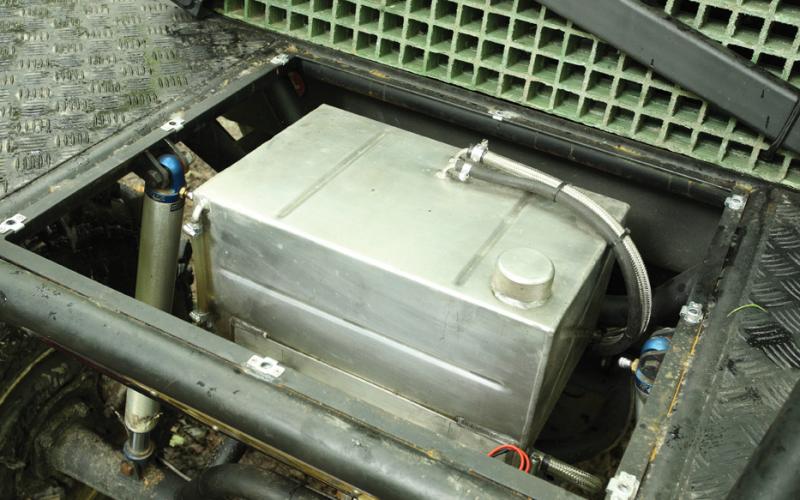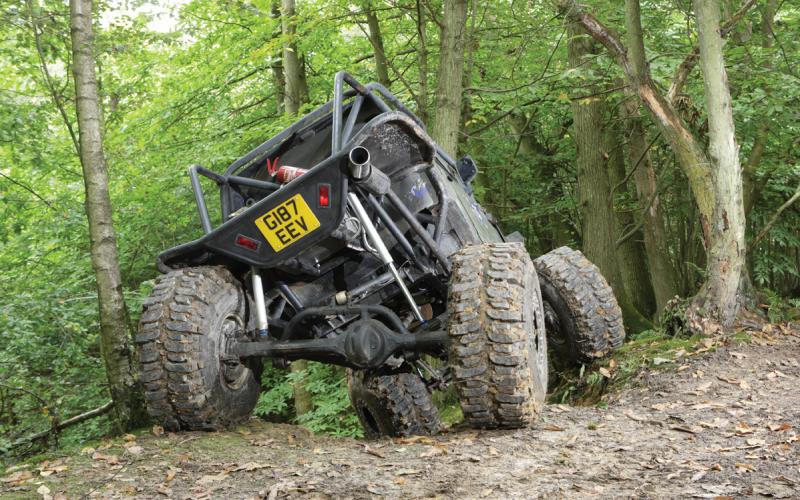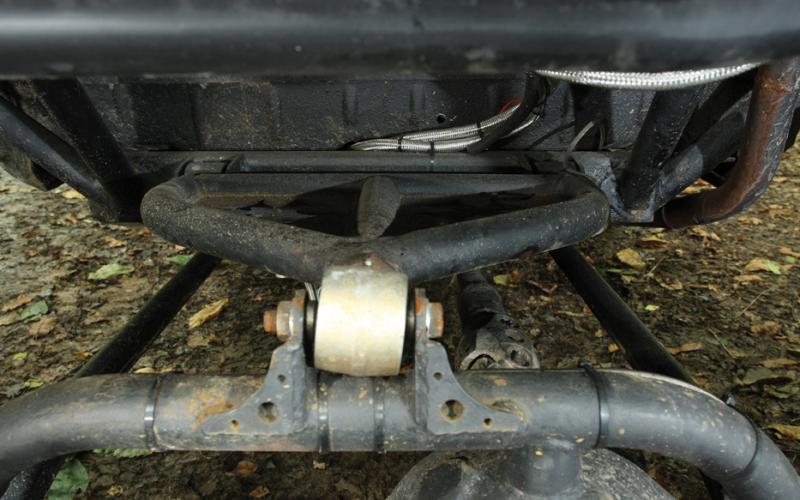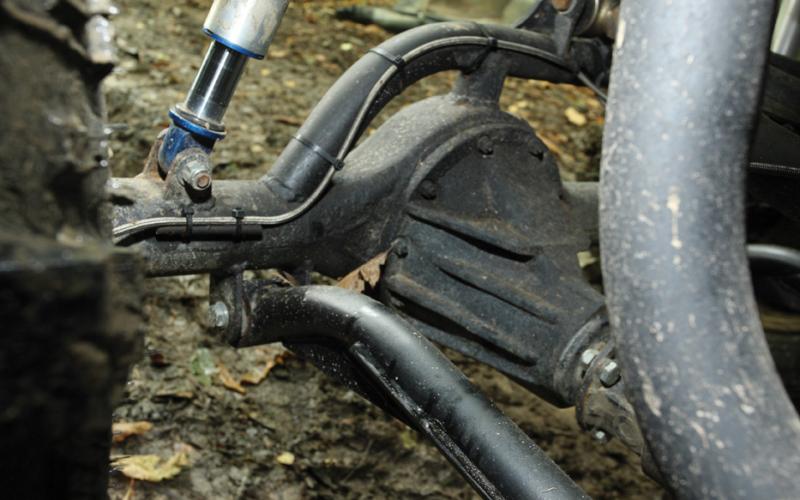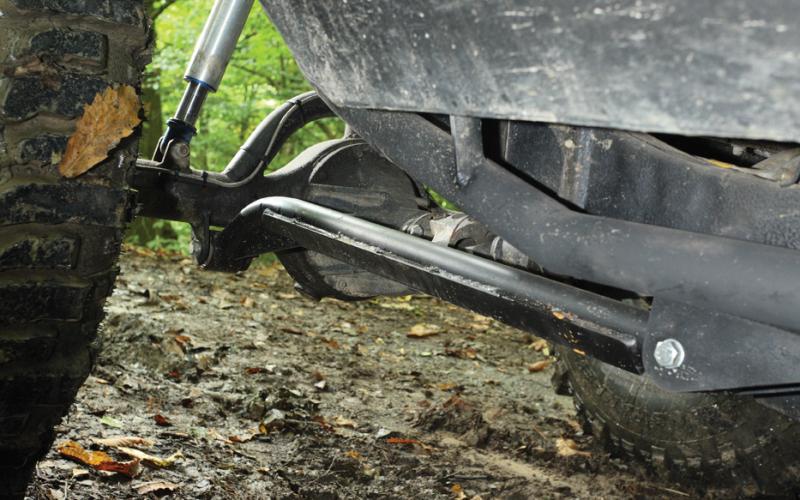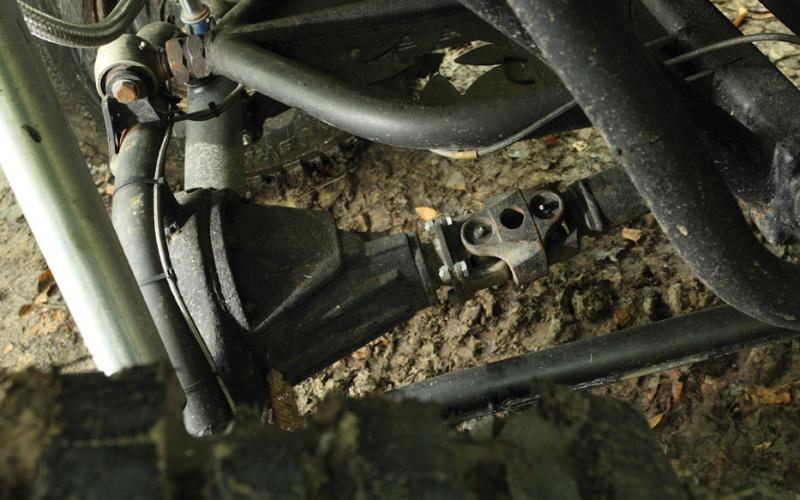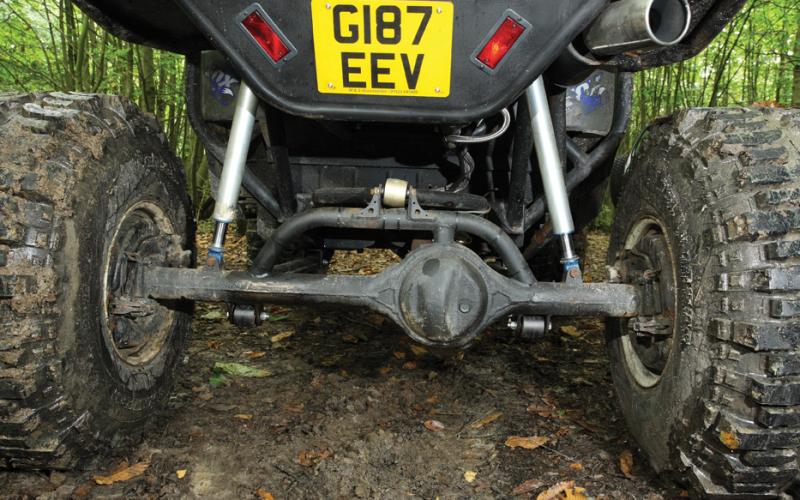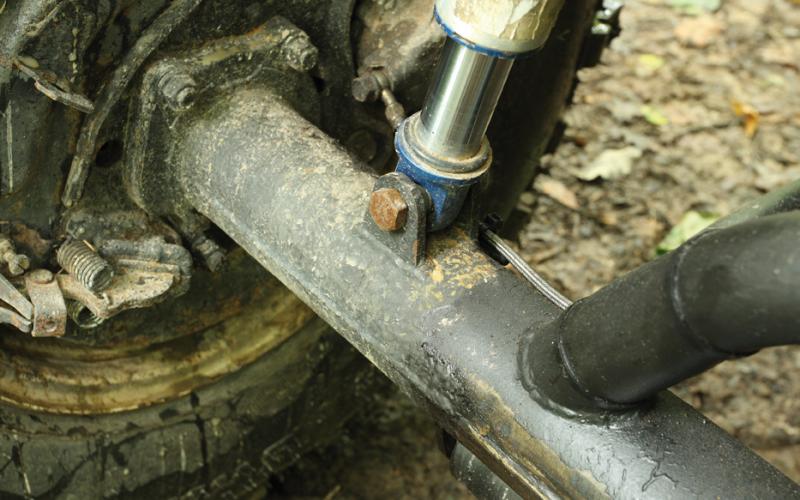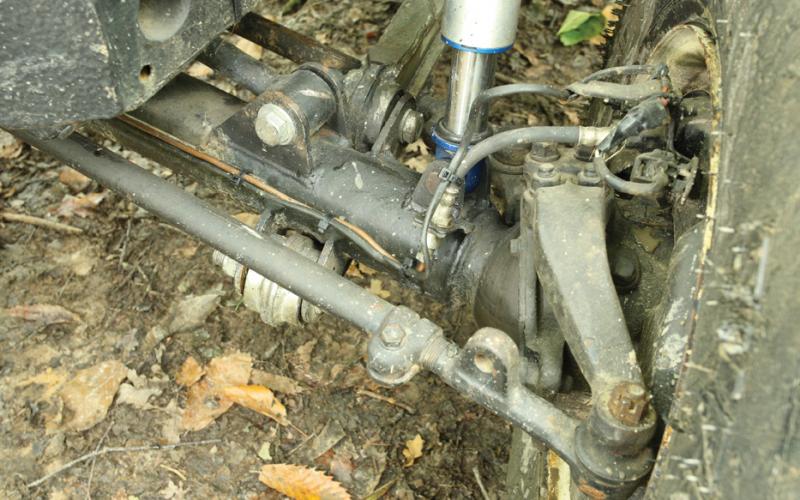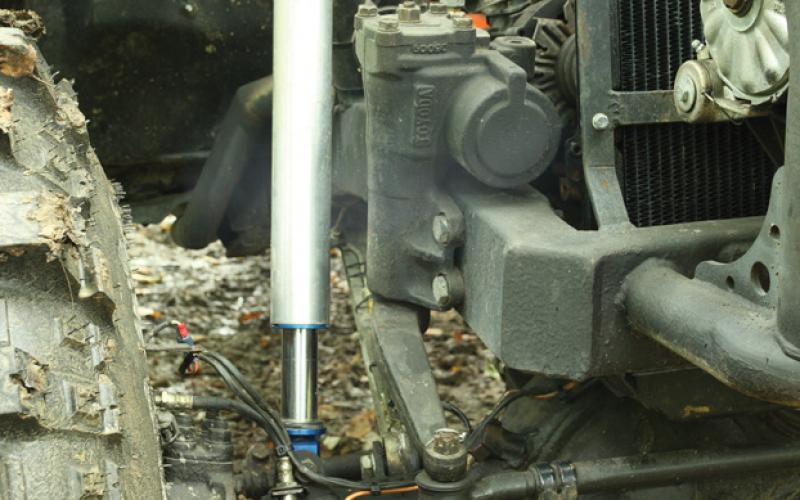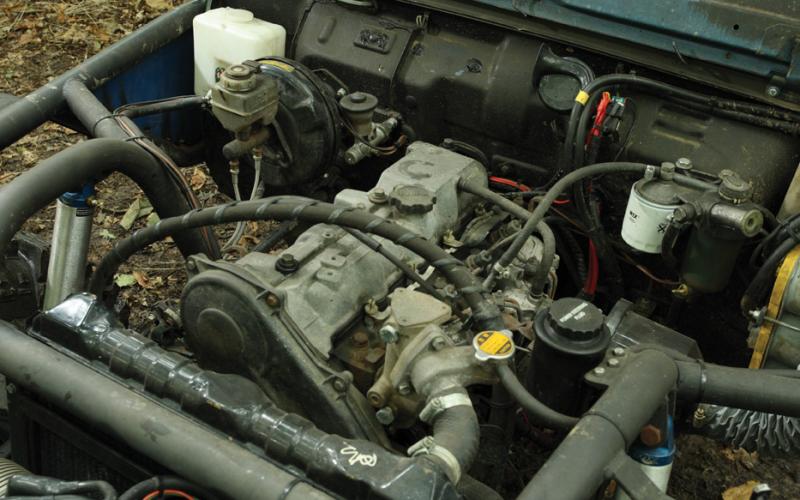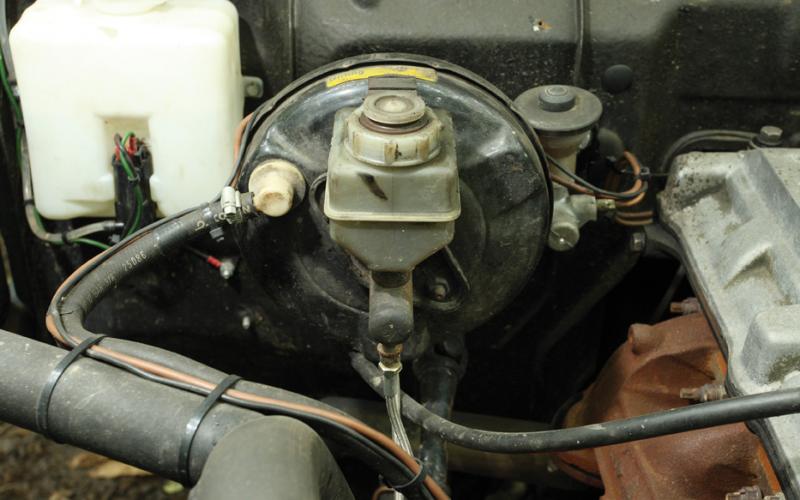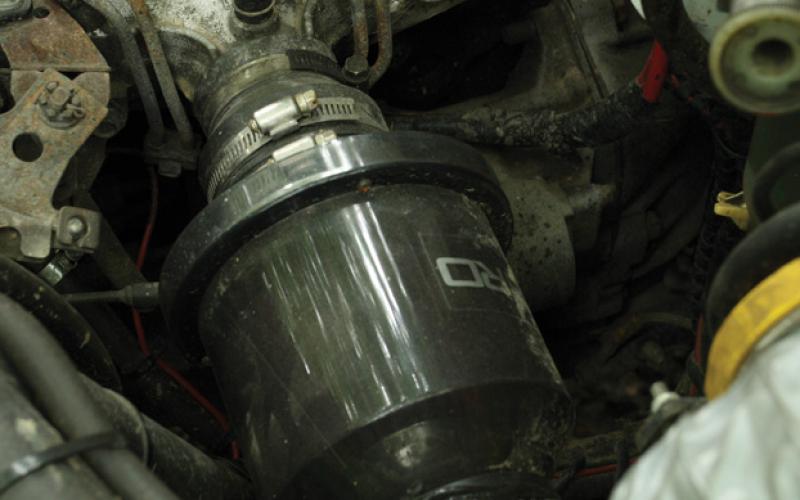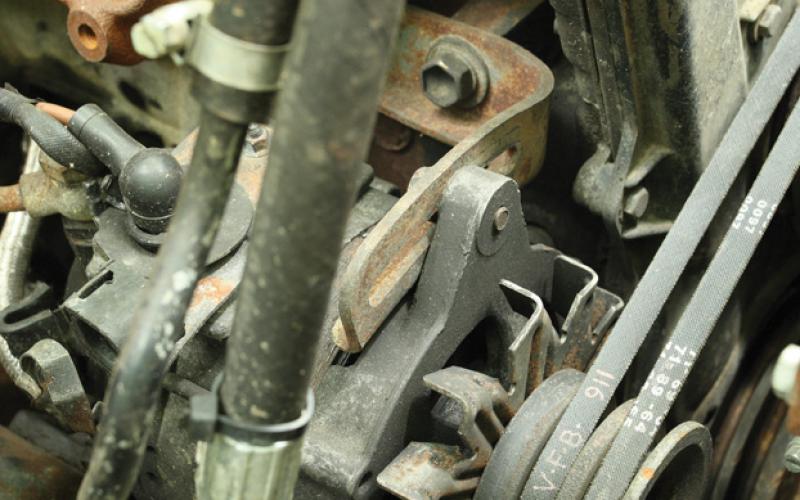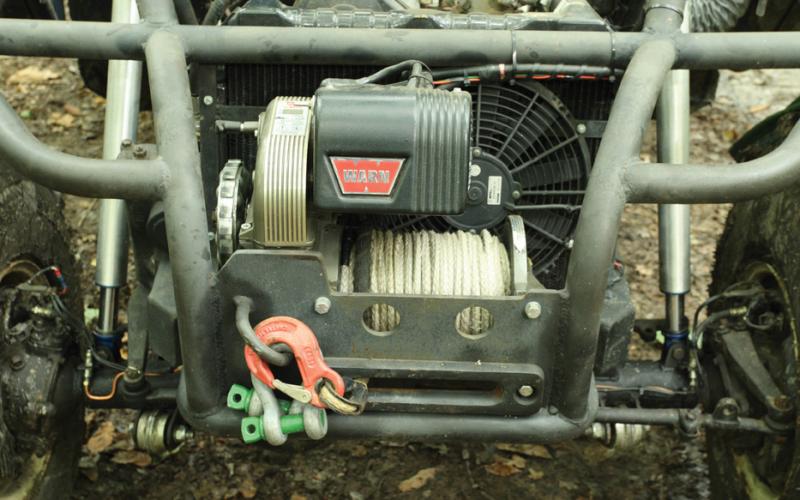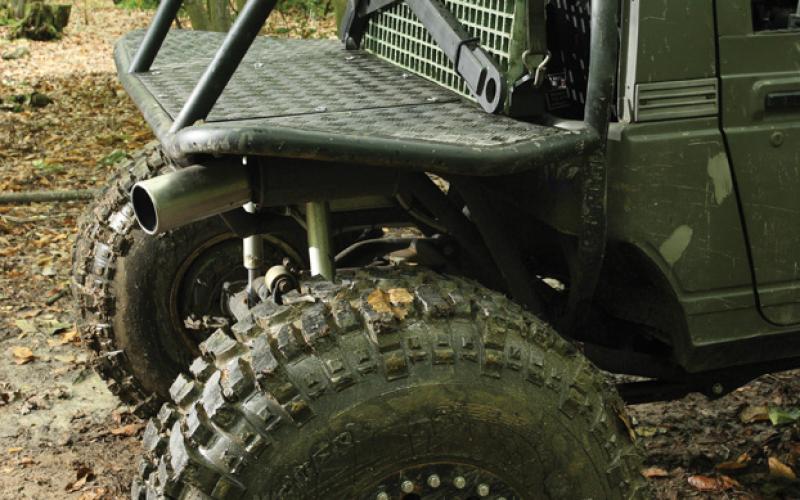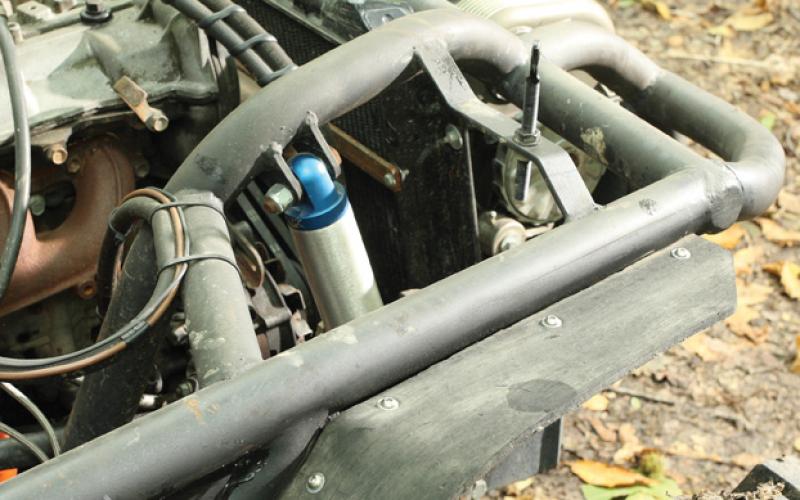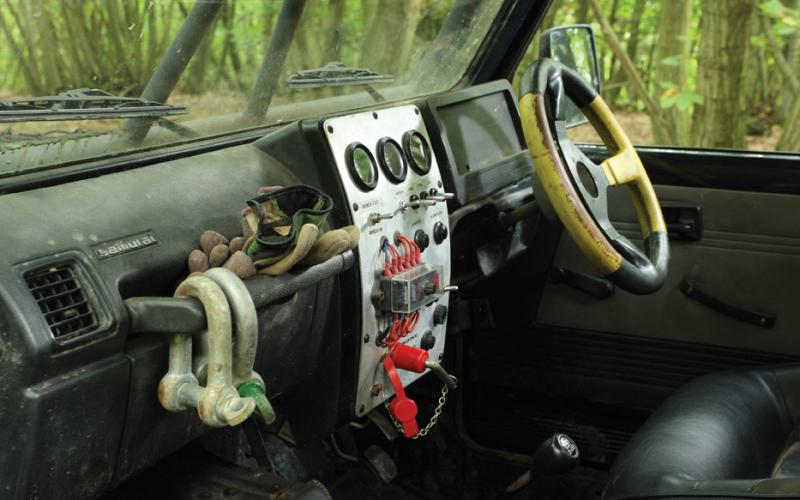Shock Tactics
At first glance, Rob Butler’s Samurai looks like any other challenge-spec off-road machine. Look closely at the pictures, though, and you’ll see there’s something missing...
We all see things from time to time. I’m not talking about apparitions, but about the way our mind fills in details without us realising. Sometimes, those details do not actually exist, or have changed, and our brain is incapable of realising.
Say you enjoy a certain view from your kitchen window – over a farmer’s field, for instance. Now let’s imagine the farmer has positioned a shed in the corner of the field, and you’ve grown accustomed to seeing the shed every time you stare out of the window. If the shed suddenly disappears one night (I hear aliens are abducting sheds a lot these days, in between crashing into wind turbines) the chances are you won’t notice until someone else, for whom the view is less familiar, alerts you to its absence.
The same phenomenon explains why fat people who lose a lot of weight still think of themselves as chubby – because their visual memory is formed with a certain image, which they continue to ‘see’ when they look in the mirror. Rather like cookies on the internet, our minds are programmed to store familiar images and reload them on the basis of a relatively small set of visual stimuli, filling in the blanks as they go. So it stands to reason that when the finer details of a regularly viewed image adjust, it takes us a while to notice.
Now, take a look at the pictures of Rob Butler’s challenge-spec Samurai. On an initial viewing, it probably looks just like any other extreme mud-bashing machine: big wheels, roll cage, tray-back. But look a little closer and you may start to feel a nagging uneasiness, as if there’s something about the vehicle that isn’t quite right.
You see (or rather, you don’t see, so I am claiming), the distinctive thing about this particular Suzuki is that it doesn’t have any springs. There aren’t any leaf springs, because the original set that were originally fitted to the truck were removed at the same time as Rob fitted it with Toyota Land Cruiser axles. But there aren’t any coil springs, either – because, typically of a man to whom innovation comes naturally, Rob has used a set-up that obviates the need for springs altogether.
This is based around a set of 14-inch air suspension units from Fox. These feature a nitrogen gas charge which operates on the oil reservoir, creating extreme downward force in a fashion that replicates the function of standard coil springs. The result is a suspension arrangement with maximum ability to follow the terrain, making the shocks highly favoured among American rock crawling enthusiasts. ‘Basically, the shocks are trying to fully extend all of the time,’ Rob explains. ‘So when you enter a situation that causes one wheel to drop, the shocks simply extend further and keep the tyre in full contact with the ground.’
If this sounds like an off-road enthusiast’s dream come true, there are pay-offs. For example, Rob reports that side slopes can prove a trifle dicey, because the downward force on the tyres (which could be expressed in terms of an upward force on the 1350kg Samurai) exacerbates the risk of rolling. This can be offset to a certain extent, however, because the amount of pressure in each shock can be adjusted through the addition or removal of oil. But it’s hardly a straightforward task to do this, and it is certainly not one that can be completed between punches.
On the whole, though, it is easy to see why these Fox units have proved so popular Stateside. They give a vehicle’s wheels unparalleled ground-hugging abilities – which, in a rock-crawling context, is not far short of the holy grail. It means contact can be maintained with the rock surface in all but the most ridiculous situations – and, no small thing, this, where contact exists, it’s meaningful, with enough ground pressure for the tyre to achieve traction rather than simply touching the surface while the other end of the axle, aided by the diff-lock that’s de rigueur in any serious rock-crawler, does all the work.
Back in the challenge environment, where this particular Suzuki sees most service, it’s the same story. Rob’s set-up allows all four wheels to provide traction for as long as possible – which means the winch, which of course maintains progress at a far slower rate, is needed with less frequency.
If you’re wondering about the likely efficacy of this approach, consider Rob’s performances in the AWDC’s Howlin’ Wolf Series. He’s entered Class Three of this championship on three occasions – and scored second-place finishes each time. Even in the overall reckoning, where he’s pitched against double-winched, diff-lock toting diehards, Rob still managed to achieve a respectable mid-field finish.
To put things into perspective, it’s worth remembering that unlike those rock-crawling specials we mentioned, Rob’s Suzuki runs with open differentials and a single winch. That’s why it qualifies for Class Three in the Howlin’ Wolf series, and it just goes to show what a bit of creative vehicle design can produce in terms of off-road agility. ‘I’ve worked hard to stay within the limits of Class Three,’ Rob explains, ‘while attempting to get the best possible performance out of my vehicle. That means tweaking various components, without going so mad that I end up in one of the modified classes.’
It’s because of the need to maintain a degree of sanity in the vehicle’s core elements that so many of the modifications involve standard components. They may not have been fitted to the Samurai in Suzuki’s factory, but they’re stock manufacturer components nonetheless… and in most cases, the manufacturer in question is Toyota.
In addition to the front and rear Land Cruiser axles, which come from a 70-Series Japanese import, the Samurai’s gearbox comes from, of all things, a two-wheel-drive Hi-Lux. Rob opted for this unit because it has lower overall ratios than the 4x4 equivalent, which helps to compensate for the Samurai’s oversized tyres. Also helpful in this regard is the SJ transfer case, which features a 4.16:1 reduction.
Rob manufactures the fitting kit for this himself, and sells it under the auspices of his Off Road Armoury components business. The conversion facilitates considerable control of a vehicle at low speeds, giving it the ability to crawl over undulating terrain under little or no throttle. It’s not the first time an SJ transfer case has been used this way, and no doubt it won’t be the last – as simple, effective solutions go, it definitely is one.
Since he’s an admirer of gear reductions, you won’t be surprised to learn that Rob also reduced the ratios in the axles. He’s clearly a tortoise rather than a hare when it comes to competitive off-roading – which in turns explains why he’s been happy so far to stick with a normally aspirated 2.4-litre Hi-Lux engine beneath the Suzuki’s bonnet.
That might be about to change, however. As you may have read in TOR before, the All Wheel Drive Club is in the process of launching an ‘extreme time trial’ series based loosely on the American concept of rock racing. These would combine the best elements of the challenge discipline with a taste of comp safari, and as you can imagine Rob is more than a little interested. Who wouldn’t be, after all? Not that you’re going to rock the world with a 2.4-litre airhead under the bonnet…
If comping and winching require very different things in the motive power department, one area in which both place enormous demands on a vehicle is its suspension. So let’s take another look at the grubby bits – because even if those Fox units represent something of a cutting-edge modification for a UK off-roader, they still only tell part of the story.
Rob has installed a three-link arrangement on the rear axle, which features a triangulated top link for greater flexibility, and intends to put a similar configuration on the front end in due course. The rear upper link features a Johnny Joint, made by Currie Enterprises in the USA. This is a polyurethane-coated rose joint, which claims to offer multi-directional movement through a range of as much as 30 degrees. The coating allows it to deliver this while boasting exceptional durability, too, which is no small thing when it’s going to live its life submerged in a bath of wet mud. Unsurprisingly, Rob is in the process of producing something similar to sell to his customers in the UK.
The essence of Rob’s approach to his business is to encourage DIY builders. He used to run a highly successful vehicle building operation (the celebrated Rubbers Suzuki), but has of late focused his energies on product design. He’ll still fit components for Off Road Armoury customers, but he’s also delighted when they choose to wield the spanners themselves. ‘If you’re not paying for labour,’ he observes, ‘you can spend a lot more on equipment for your vehicle.’ What’s more, getting in there yourself generates an intimate knowledge of your truck, which makes in-field repairs a lot more straightforward.
Not that any form of vehicle maintenance appears to pose too much of a challenge for Rob. He’s adept at developing useful modifications from scratch, and the Samurai is like his other project vehicles insofar as it is constantly evolving. He’s already working on a solution to the handling problems associated with the strength of the shock absorbers (more about this in the separate box on these pages), and it’s only a matter of time before the Samurai is fitted with fiddle brakes. As well as allowing the vehicle to turn almost on its own axis, these can be used as surrogate diff-locks: the driver starts to engage the brake on the spinning wheel, and as it slows down power is forced back across to the other side of the axle. Even better, because the vehicle’s differentials remain open, a car equipped with fiddle brakes can in theory compete in the same class as the most lightly modified vehicles in a challenge event.
Consolidating the Samurai’s status as ‘lightly modified’ – albeit in ingenious fashion – is its single Warn 8274. Here again, Rob’s found a way of keeping to the requirements of his chosen competitive class while making the most of the mod. The winch is mounted on the front of the truck, nestled among the tubular roll cage that Rob constructed when he performed the tray-back conversion. Because the Samurai is short, however – the rearmost point is the back of the 38.5-inch Interco Super Swamper tyres – Rob has found that the Plasma winch rope can be lobbed over the cabin and used to pull the car backwards. One winch: forward and reverse rescue options.
Other components to come from Toyota donors include the power steering pump (from a 70-Series Land Cruiser) and the radiator, which was taken from a 2.4-litre turbo-diesel Surf. This latter choice was deliberate, because only the Surf component, rather than the equivalent from a Hi-Lux or Land Cruiser, would fit beneath the Samurai’s bonnet.
What this vehicle demonstrates in emphatic style is that an off-roader is considerably more than the sum of its parts. Excepting the shocks, the number of aftermarket components on this truck is minimal – a winch, an Optima Yellow Top, Cobra racing seats and a set of oversized tyres. Everything else is either sourced from a stock 4x4 or fabricated by Rob himself.
That includes the wheel rims, which are Hi-Lux unit on to which Rob fitted beadlocks to let him run at ultra-low pressures, and the exhaust. Made from two-inch stainless steel pipe, this exits via a Range Rover box to a cabbage-shooter tip.
Bearing in mind the amount of effort that has gone into developing the vehicle, you can understand why Rob is keen to assert that he wouldn’t part with it for any money. ‘This is my personal project,’ he states, ‘it’s not a part of my business activities.’
That assertion notwithstanding, the Samurai does demonstrate Rob’s intuitive feel for all things off-road. It’s like his brain is hard-wired to find creative ways of making the most of a 4x4’s potential for traversing difficult ground. And all the time his thinking bears fruit in the form of off-road trick bits, there’s a chance for our visual memories to be fooled.
So remember: when you come across a modification that Rob Butler’s had a hand in designing, be sure to pay attention. There’s a fair chance that what your eyes see will be exactly what your brain least expects…




